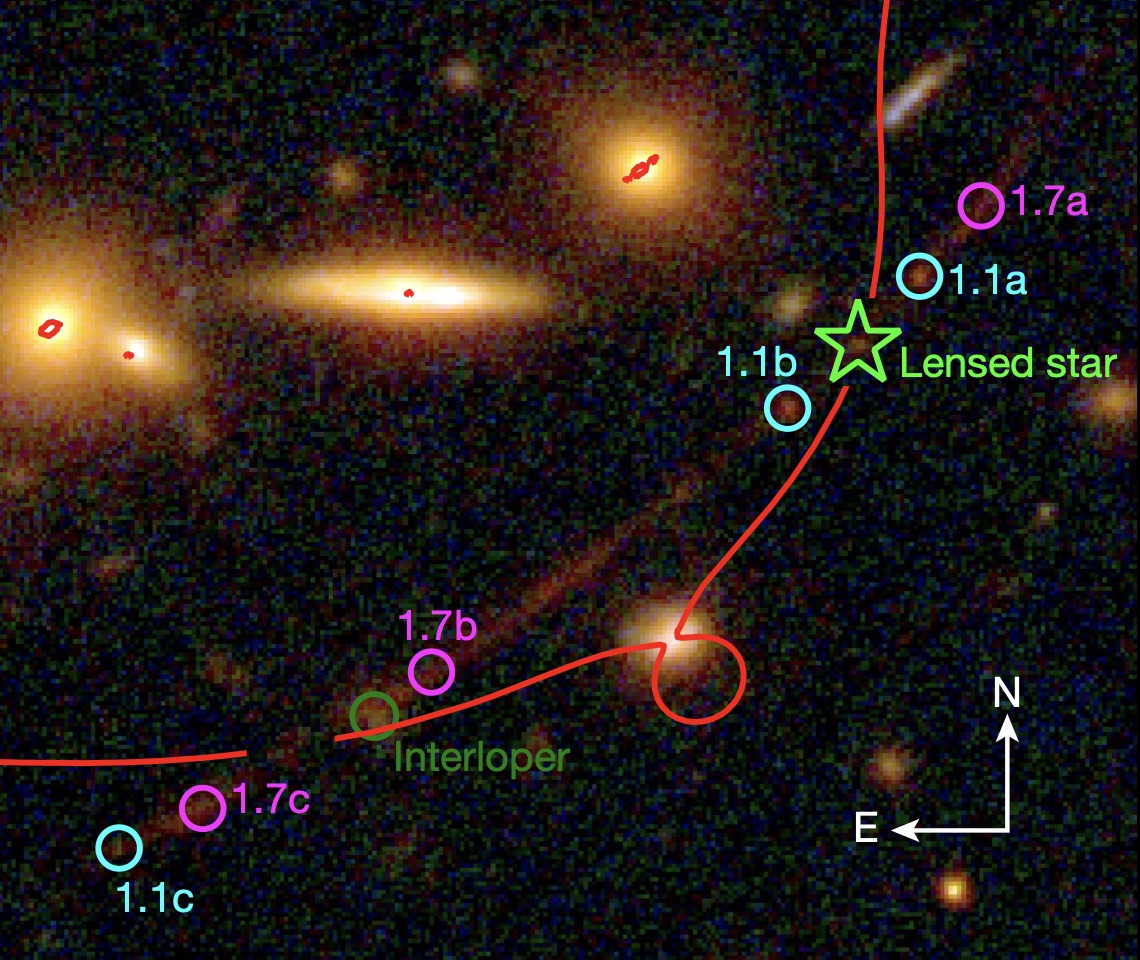Earendel: The farthest star
Far-away stars, however luminous, cannot be photographed individually even with the best space-based telescopes. But this would be extremely interesting for researchers, because with increasing distance we are entering the early days of the universe, about which we still know too little.
But with a bit of luck, the universe itself is helping astronomers – by placing powerful galaxies in such a convenient way that they amplify the light of a star that is actually much too distant – in this case in the form of the galaxy cluster WHL0137-08. For example, the Hubble Space Telescope recently succeeded in observing a single star shining about 900 million years after the Big Bang, as the science magazine Nature reports. The discovery is much more distant than previous observations of similar systems, placing it at a very early stage in the evolution of the universe.
The object described by Brian Welch and colleagues, designated WHL0137-LS, has since been nicknamed Earendel, an Old English word meaning “morning star” or “rising light.” Since it is either a single star or a binary star system. Earendel is estimated to have a mass more than 50 times that of the Sun. Its redshift is 6.2, the authors report. Redshift indicates how light is stretched during its long journey. It can be used to infer the distance of astronomical objects. The larger the number, the farther away (or earlier in the history of the universe) the object is. Earlier observations of individual stars were classified at smaller redshifts of about 1-1.5.
However, precise information about the star’s temperature, mass, and spectral properties remains uncertain. The authors hope that the James Webb Space Telescope will be able to determine them in the future.
Could aliens be waving at us from Earendel? Probably not. So soon after the Big Bang, the universe did not yet possess enough heavy elements to make life possible in the way we know it today.
